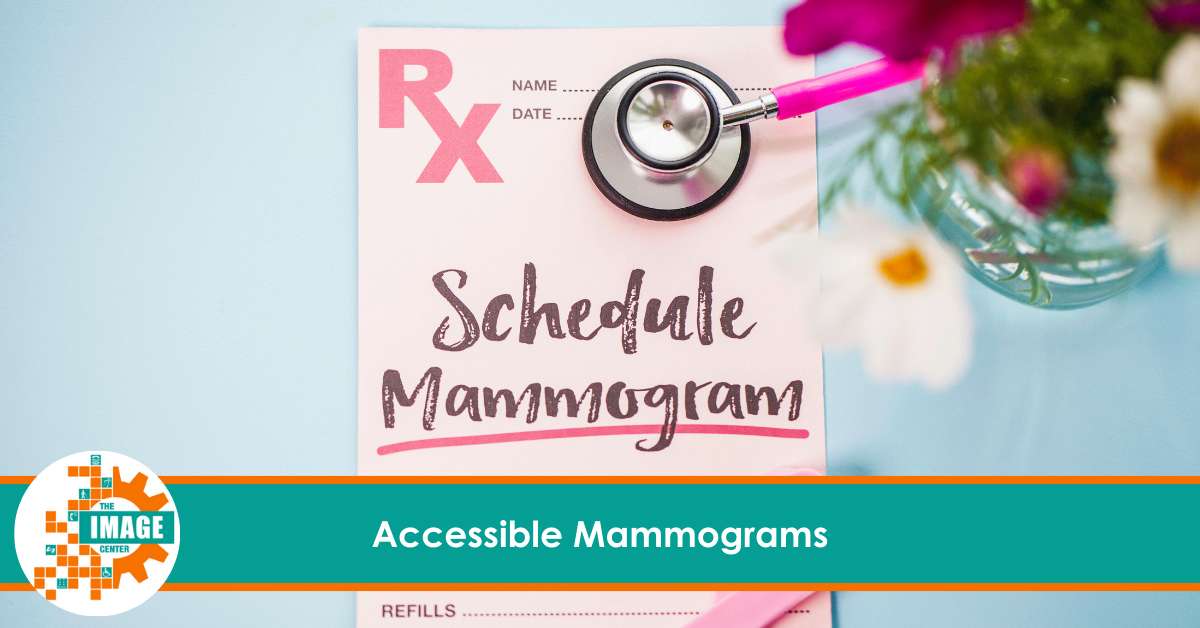Mammograms are a crucial tool in early detection of breast cancer, and for millions of women, they represent a life-saving screening. However, for individuals with disabilities, mammograms are not always as accessible as they should be. Ensuring that this essential healthcare service is available to everyone, regardless of physical limitations, is vital for fostering an inclusive and equitable healthcare system.
Many individuals with disabilities face barriers when it come to receiving a mammogram. These barriers can be physical, procedural, or related to communication.
Some of the most common challenges include:
Physical Accessibility: Traditional mammogram machines are often not designed to accommodate people with mobility issues, particularly those who use wheelchairs. The height of the machine, the requirement to stand, or the need to maintain a certain posture for a clear image can be difficult or impossible for some people.
Sensory Disabilities: Those with vision or hearing impairments may find it difficult to follow instructions or understand the procedures without clear communication tools in place. Inadequate training for medical staff in providing accommodations can exacerbate these issues.
Cognitive Disabilities: Individuals with cognitive impairments may experience anxiety or confusion about the procedure. In such cases, it’s crucial that healthcare providers communicate clearly, patiently, and with sensitivity, offering extra support to ensure the patient feels comfortable.
To create a more inclusive environment for mammograms, several steps can be taken. Each adjustment helps not only individuals with disabilities but also anyone who might feel anxious or have difficulty with standard medical procedures.
Healthcare facilities must invest in mammogram machines that accommodate individuals with physical disabilities. Adjustable-height machines that can accommodate both standing and seated patients are a crucial step toward ensuring that individuals with limited mobility can undergo mammograms comfortably.
It’s not just the machines that need adjustments; staff must also be trained to work with patients who have a range of disabilities. This training should cover everything from physical assistance techniques to clear, compassionate communication. Sensitivity training helps staff understand the unique needs of disabled patients and how to respond appropriately.
Patients with disabilities may need more time for the procedure to ensure they feel safe and comfortable. Healthcare facilities can offer longer or more flexible appointment slots to avoid rushing the process, which can lead to discomfort or even incomplete scans.
For patients with hearing or vision impairments, clear communication is essential. Healthcare providers should offer written instructions in large print or braille and ensure the availability of interpreters or captioning services for those with hearing impairments. Providing detailed explanations beforehand, either in person or via accessible online materials, can reduce patient anxiety and prepare them for what to expect.
Education campaigns about the importance of mammograms should be inclusive, ensuring that individuals with disabilities are not left out of vital health messaging. Using diverse imagery and representation in materials, along with promoting available accommodations, can help reach a broader audience and reduce health disparities.
Making mammograms accessible is not just about meeting a medical need—it’s about ensuring dignity, respect, and equitable care for all patients. When individuals are unable to receive essential healthcare services due to accessibility issues, it leads to worse health outcomes, particularly for those already at higher risk of breast cancer.
Creating an inclusive environment is a win-win for both patients and healthcare providers. Accessible mammograms reduce healthcare disparities, increase early detection of breast cancer in populations that might otherwise be overlooked, and demonstrate a commitment to offering quality care to every individual, regardless of their abilities.
Accessibility in healthcare, including mammograms, is not a luxury—it’s a necessity. By investing in accessible equipment, providing staff training, and ensuring clear communication, healthcare providers can help remove barriers to critical services. The path to inclusivity in healthcare might require effort and investment, but the return—better health outcomes, empowered patients, and an inclusive society—is invaluable.

